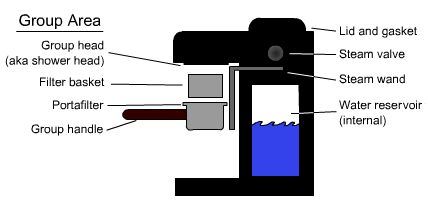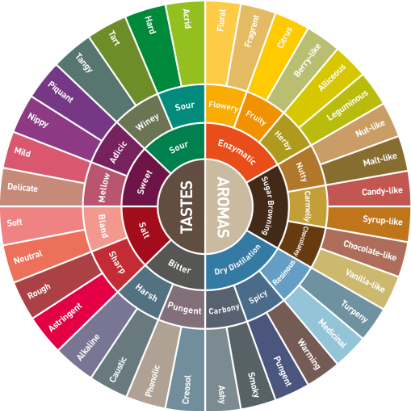How Do You Use a Coffee Maker Step by Step?
How Do You Use a Coffee Maker Step by Step?
To use a coffee maker, follow these steps:
Add a coffee filter in the filter basket: Place a clean coffee filter, either paper or reusable, into the filter basket of your coffee maker. This will prevent coffee grounds from ending up in your brewed coffee.Measure out the coffee: Determine the amount of ground coffee beans based on your preferred strength and the desired number of cups. As a general rule, use one to two tablespoons of coffee grounds per six ounces of water. Adjust the amount according to your taste preferences. Scoop the measured coffee grounds into the filter basket on top of the coffee filter.
Measure out enough water to brew your coffee: Fill the water reservoir of the coffee maker with the appropriate amount of water. Consider the number of cups you want to brew, and ensure not to exceed the maximum fill line indicated on the reservoir. Pour the water into the reservoir, making sure it is securely closed to prevent leaks. You can use cold water when making cold coffee or cold brew.
Wait until the coffee is completely brewed before pouring: Once everything is set up, turn on the coffee maker and wait for the brewing process to complete. The coffee maker will heat the water and pass it through the coffee grinds, extracting the flavors and aromas. It usually takes a few minutes for the brewing to finish and you'll have your hot coffee, but this may vary depending on the machine.
If you used a paper filter, throw it away after brewing: After having your freshly brewed coffee, carefully remove the carafe from the warming plate. If you used a paper filter, discard it along with the used coffee grounds. Reusable filters can be emptied and rinsed for future use.
What Are the Basic Parts and Functions of a Coffee Maker?

The basic parts and functions of coffee machines include:
Power Button: This button is used to turn the coffee machine on or off, activating the brewing process.Tamper: A tool used to compact coffee grounds inside the portafilter to ensure even extraction.
Grouphead or coffee pot: The part where the portafilter attaches. It distributes pressurized water evenly over the coffee grounds during brewing.
Portafilter: A detachable handle that holds the coffee grounds. It locks into the grouphead and is responsible for brewing coffee.
Removable Drip Tray: Located beneath the grouphead, it collects any drips or spills during brewing and is easily removable for cleaning.
Storage Tray: A platform that holds cups or mugs while coffee is being brewed.
Steam Wand: Used for steaming milk to create milk-based beverages like cappuccinos or lattes.
Hot Water Outlet: Dispenses hot water for making teas or Americano-style coffee.
How Do You Prepare the Coffee Maker for Use?
To prepare the coffee maker for use, follow these steps:
Ensure the coffee maker is unplugged and clean from any previous use.Fill the water reservoir with the desired amount of water, considering the number of cups you want to brew.
Place a coffee filter in the filter basket.
If applicable, ensure the carafe is securely placed on the warming plate.
Plug in the coffee maker and it's ready for use.
How Many Scoops of Coffee Do You Put in a Coffee Maker?
The amount of pre ground coffee you should put in a coffee maker varies based on personal preference and desired strength.
As a general guideline, use about 1.5 to 2 tablespoons of coffee per cup. Avoid adding more than 1 ½ cups of coffee grounds to the filter. Scoop coffee into the filter until it is at least one centimeter deep.
This measurement typically amounts to anywhere from 12 to 18 tablespoons-sized scoops, depending on your preferred strength.
How Do You Clean and Maintain Your Coffee Maker After Use?

To clean and maintain your coffee makers after use, you can follow these steps:
Fill the reservoir with up to 4 cups of undiluted vinegar.
Allow the vinegar to sit in the reservoir for 30 minutes.
Run a brewing cycle, letting the vinegar flow through the machine.
After the vinegar cycle, run two to three cycles of fresh water to remove any vinegar smell.
Read here to find the Best Coffee Maker in the World
FAQs
Should you clean coffee maker after every use?
Yes, it is recommended to clean your coffee maker after every use. Regular cleaning helps remove any residual coffee oils, mineral buildup, and impurities, ensuring optimal performance and maintaining the flavor of your fresh coffee. It also helps prevent the growth of mold and bacteria which make coffee taste bitter.
How do I know if my coffee maker needs to be cleaned?
You may notice signs that indicate your drip coffee maker or pour over coffee maker needs cleaning, such as slower brewing times, unusual tastes or odors in your coffee, visible mineral deposits, clogged parts or smell from leftover coffee.
Good Tasting Coffee: How to Identify Coffee Flavors

In order to appreciate the different types of coffee available, it's important to cultivate an awareness of its unique characteristics. Let's take a look at the way coffee connoisseurs judge different cups of coffee.

Aroma
The scent of a cup of coffee has a direct influence on how we perceive its flavor. As you drink coffee try to notice if the scent is smoky, fruity, earthy, spicy, nutty or grassy.
Acidity
One of the most defining characteristics of a cup of coffee is its acidity. This is the sharp, bright tangy quality of coffee that perks up our senses. Coffee doesn’t necessarily contain just one type of acid, either. It may contain citric acid, malic acid (fruity in flavor) or even quinic acid from stale coffee, which gives us stomach aches.
Body
This is the weight, thickness and texture of coffee in your mouth. The body of different types of coffee falls on a spectrum of light- to full-bodied viscosity (thin to thick).
Flavor
This is where comparisons come in handy and there is some overlap between aroma and flavor. Your coffee might taste bitter, sweet, savory or sour with common comparisons to chocolate, wine or fruit.
Related Posts

















